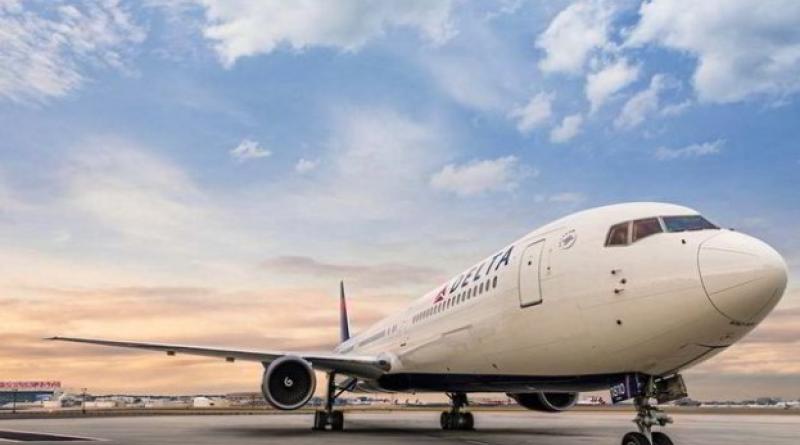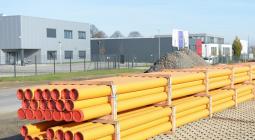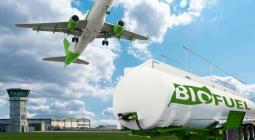‘Pure hydrogen is not a viable aviation fuel because we don't yet have enough’, says Topsoe CEO

Hydrogen will not be a viable fuel for long-haul aviation or planes currently running with fossil-fuelled jet engines — for as long the scarcity of renewables and electrolysis capacity continues, the head of electrolyser manufacturer Topsoe has said.
“Whatever people say, you will not see big jet liners flying on batteries. You will not see hydrogen as a viable option for a fuel for long-distance flying,” said Roeland Baan, Topsoe’s CEO, in a recent interview with Hydrogen Insight.
According to Baan, this is because there is not enough time to scale up renewable energy and electrolyser capacity enough to meet the aviation industry’s decarbonisation needs and also meet demand for hydrogen elsewhere.
“If you look at the pathway [from electrons to jet fuel], it will take time,” he continued. “For the simple reason that there is a need for build out of green electrons and there is a need for build out of electrolyser capacity.”
Instead, bio-based sustainable aviation fuels (SAFs) will be the most efficient route to aviation decarbonisation, Baan said, explaining the company’s decision to enter into a joint venture with South African chemicals giant Sasol to make bio- and green hydrogen-based SAFs.
“The most readily available technology is bio[fuels],” he said. “Bio either as edible oils and fats or bio as biowaste that you can gasify or through liquefaction get into synthesis for the next steps.”
“There is no real alternative other than a drop-in sustainable fuel,” he added, noting that long-haul flights account for 55% of aviation emissions, despite only comprising 6% of flights.
This view tracks with recent analysis that found that green hydrogen and batteries are unlikely to have enough market share to reduce aviation emissions by more than 5% by 2050, with SAFs reducing them by 23% — if there is enough supply.
But despite Baan’s misgivings about the availability of green electrons and electrolyser capacity, the Topsoe-Sasol JV intends to use green hydrogen in its Fischer Tropsch (FT) method of SAF production, in which hydrogen and carbon are reformed and synthesised together with heat.
However, compared to pure H2 aviation fuels, hydrogen and biofuel-based SAFs should require less green H2 — and therefore fewer electrolysers and less renewable energy capacity — to make each litre of fuel.
In many FT processes, H2 is combined either with captured carbon dioxide or biomass- or waste-based feedstocks to create synthetic hydrocarbons.
The duo plan to use a combination of Sasol’s FT technologies (which combine green hydrogen and biomass-based CO2) and Topsoe’s “relevant SAF” technologies, many of which use FT.
Topsoe has technology to make renewable biofuels and SAFs from bio-oils and fats (known as HEFA-SPK), as well as FT-based technologies to make SAFs from solid biomass and waste, or e-fuels from green hydrogen and CO2.
But there may be a niche for hydrogen-fuelled aircraft in the long-term, the company added.
“SAF produced on bio-feedstock is available here and now, and will be the solution for aviation in the short term as we ramp up on electrolyser capacity and renewable energy, enabling us to scale up on e-fuels,” a spokesman for Topsoe said. “Longer term, we also envisage room for hydrogen.”
Airbus is developing a hydrogen aircraft as part of its ZeroE programme, however these planes are not expected to enter the market until at least 2035.
The same timeframe goes for the hydrogen-fuelled jet engine under development by airliner Easyjet and engineering firm Rolls-Royce.
But with the EU and US not certain to meet their SAF blending targets, uptake could be hindered by supply squeeze.
Already airlines are scrambling to secure a supply of SAFs. Last year Delta Airlines placed a massive order for 385 million gallons of SAFs — made using green hydrogen with FT — from a US producer.
However, while the Sasol JV has likely hit upon the right time to ramp up SAF production, it represents a departure for Topsoe, which has not entered into a build-own-operate model of fuels production before, and has no experience marketing them on the global market.
“It is new in the sense that we are not marketers of fuels,” Baan explains. “That’s where Sasol comes in [with its experience] in the aviation industrial market.”
“We looked at the market and we basically came to the conclusion that in order to accelerate this you need a new player,” he concludes. “The majors are a bit slow in getting into the space but you have enough developers who are trying scramble for financing and do not have technology nor a balance sheet. And here you have us: we have a balance sheet — together [with Sasol] two balance sheets — we have the technology, we have the experience. So it makes absolute sense to be the first completely dedicated end-to-end SAF producer in the world.”
Hydrogen Insight's full interview with Roeland Baan is coming soon.(Copyright)






